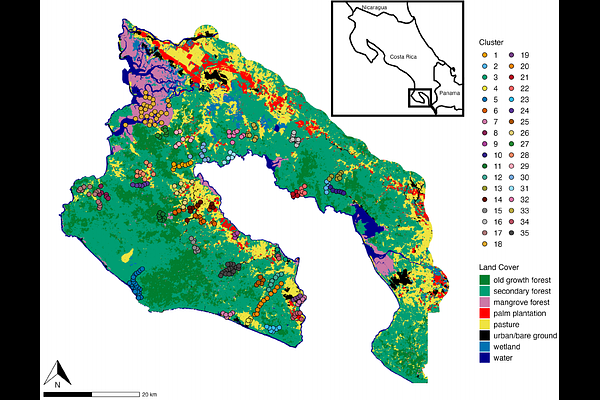Robotics-assisted acoustic surveys could deliver reliable, landscape-level biodiversity insights

Robotics-assisted acoustic surveys could deliver reliable, landscape-level biodiversity insights
Bevan, P.; Sethi, S. S.; Lawson, J.; Banks-Leite, C.; Kovac, M.; Picinali, L.
AbstractTerrestrial remote sensing approaches, such as acoustic monitoring, deliver finely resolved and reliable biodiversity data. However, the scalability of surveys is often limited by the effort, time and cost needed to deploy, maintain and retrieve sensors. Autonomous unmanned aerial vehicles (UAVs, or drones) are emerging as a promising tool for fully autonomous data collection, but there is considerable scope for their further use in ecology. In this study, we explored whether a novel approach to UAV-based acoustic monitoring could detect biodiversity patterns across a varied tropical landscape in Costa Rica. We simulated surveys of UAVs employing intermittent locomotion-based sampling strategies on an existing dataset of 26,411 hours of audio recorded from 341 static sites, with automated detections of 19 bird species (n = 1,819) and spider monkey (n = 2,977) vocalisations. We varied the number of samplers deployed in a single survey (sampling intensity) and whether the samplers move between sites randomly, in a pre-determined route to minimise travel time, or by adaptively responding to real-time detections (sampling strategy) and measured the impact on downstream ecological analyses. We found that observed avian species richness and spider monkey occupancy was not impacted by sampling strategy, but that sampling intensity had a strong influence on downstream metrics. Whilst our simulated UAV surveys were effective in capturing broad biodiversity trends, such as spider monkey occupancy and avian habitat associations, they were less suited for exhaustive species inventories, with rare species often missed at low sampling intensities. As autonomous UAV systems and acoustic AI analyses become more reliable and accessible, our study shows that combining these technologies could deliver valuable biodiversity data at scale.